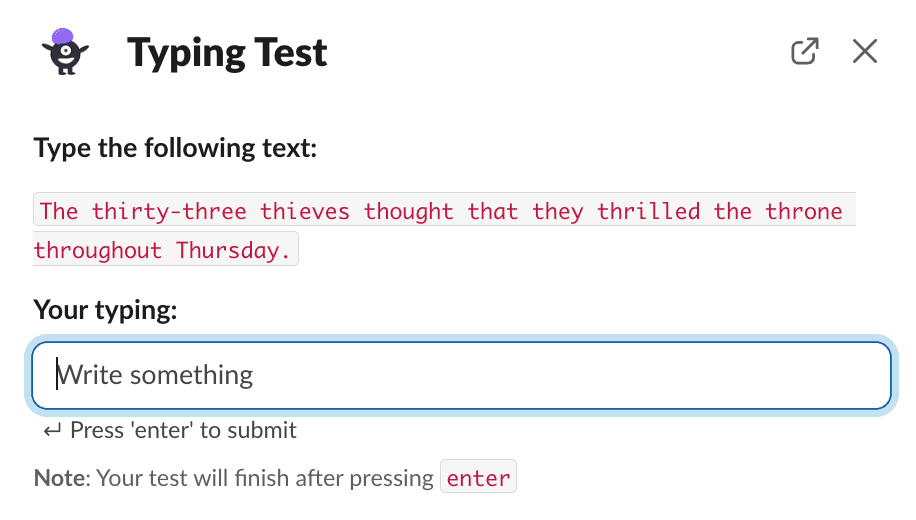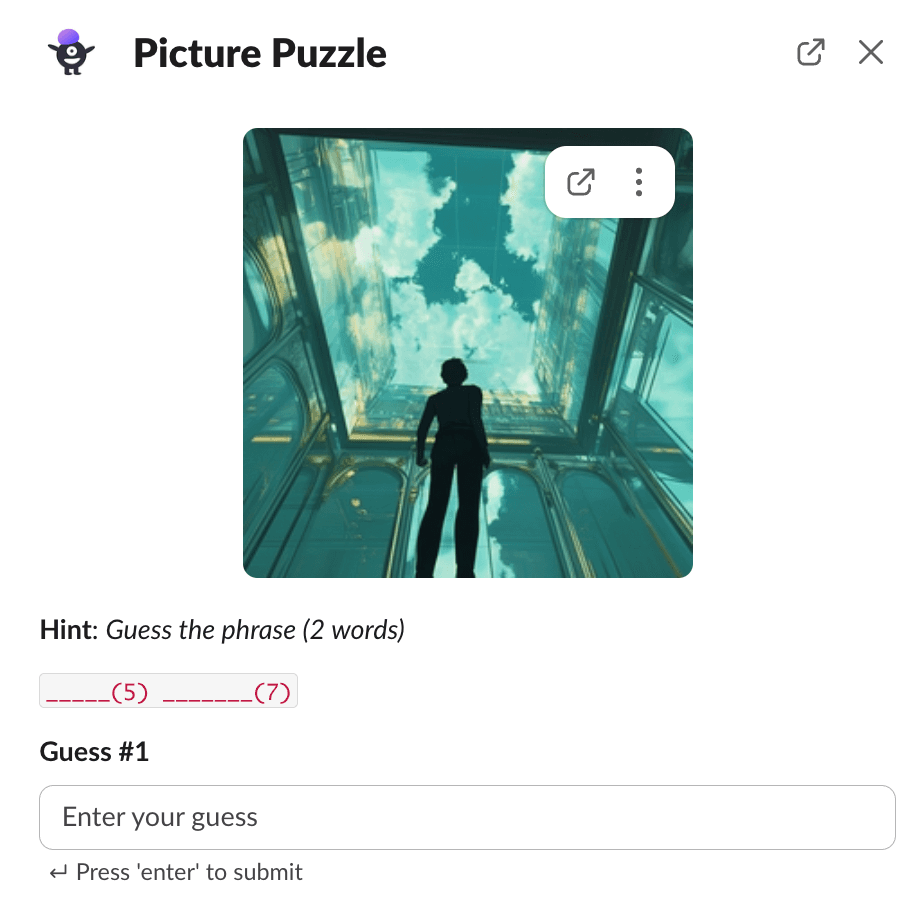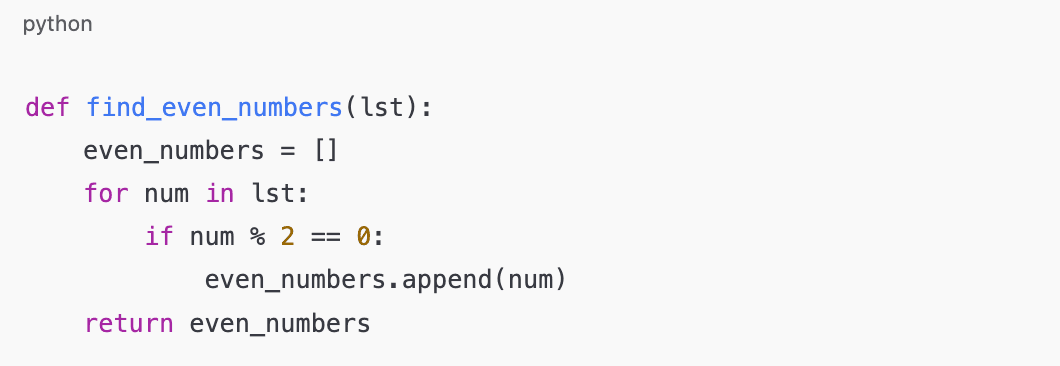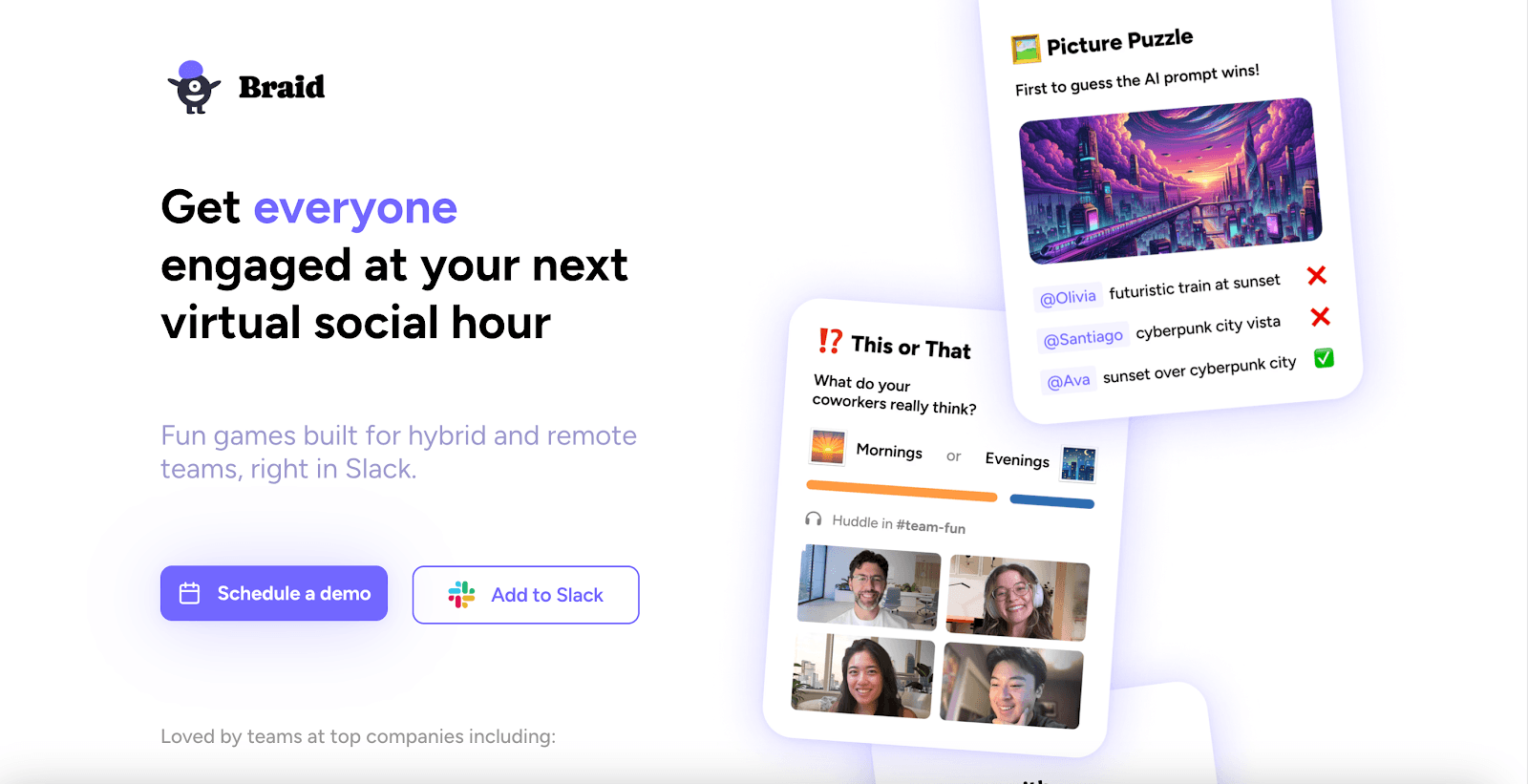Table of contents:
Engineers thrive in structured, problem-solving environments, but teamwork plays just as big a role in successful projects. Whether working in an office or remotely, engineering teams need strong collaboration, clear communication, and a shared sense of purpose to solve complex challenges together.
However, traditional team-building activities don’t always resonate with engineers. Icebreakers and trust falls? Not so much. Instead, engineering teams engage best with logic-based challenges, problem-solving games, and hands-on projects that align with their skills and interests.
Want to know which activities your engineering team will love and that help bring the team closer? Keep reading!
Best Remote Team-Building Activities for Engineers
Even when working remotely, engineering teams can still build strong connections through activities that encourage problem-solving, creativity, and collaboration.
Here are some of the best remote-friendly team-building activities designed with engineers in mind.
1. Typing Test

Typing Test is a fast-paced game where players compete to type a given passage as quickly and accurately as possible. The game tracks speed and accuracy, ranking players on a live leaderboard.
It’s simple, fun, and great for anyone who spends a lot of time typing—whether it’s engineers, developers, or other remote teams.
Engineers, especially software developers, rely on fast and precise typing in their daily work, whether coding, debugging, or writing documentation, and productivity matters.
Typing Test gives them a fun way to sharpen their typing skills while adding a competitive edge. The real-time scoring system keeps the energy high, making it a great team bonding experience.
How to Play
Visit Braid’s website and add it to your Slack workspace.
Grant the necessary permissions for Braid to integrate with your Slack channels.
Open Slack and enter /braid typingtest in a channel or browse the Braid game library to select a game.
Players join the round and get ready for the challenge before the game begins.
A random passage appears, and participants race to type it as quickly and accurately as possible.
Braid tracks each player’s speed and accuracy, updating the leaderboard in real time.
The round ends with final rankings, and the fastest, most accurate typist is crowned the winner.
Sample Passage

2. Wordsmith

Wordsmith is a word-based challenge where players must form as many words as possible from a given set of scrambled letters. The game tests vocabulary, quick thinking, and pattern recognition–a great way to break up the workday with a fun and engaging brain teaser.
Engineers love a good challenge, and Wordsmith is the perfect mix of strategy, quick thinking, and problem-solving. It’s like debugging code, spotting patterns, making connections, and working fast under pressure.
It is also a fun way for remote teams to jump into a friendly competition, stay sharp, and take a break from the usual routine.
How to Play
Visit Braid’s website and add it to your Slack workspace.
Grant the necessary permissions for Braid to integrate with your Slack channels.
Open Slack and enter /braid wordsmith in a channel or browse the Braid game library to select Wordsmith.
Players receive a set of scrambled letters and must form as many valid words as possible within the time limit.
Words are scored based on length and complexity, with a live leaderboard tracking progress.
When time runs out, the player with the highest score wins.
Sample Gameplay
Sample letters your team will receive: E, H, T, I, K, N, R
Words created: Think, Thin, Hike, Knit, Tinker, Rethink
3. Picture Puzzle

Picture Puzzle is a visual challenge where players are given an image that has been broken into pieces or slightly altered. The goal is to either reconstruct the original image or spot the differences as quickly as possible. This game tests pattern recognition, attention to detail, and quick decision-making.
Spotting small details is what engineers do best, and Picture Puzzle puts that skill to the test. Whether debugging code, identifying design flaws, or analyzing data, engineers are always looking for what others might miss.
This game keeps things competitive and engaging while giving teams a fun way to take a break, stay sharp, and challenge their pattern recognition skills.
How to Play
Visit Braid’s website and add it to your Slack workspace.
Grant the necessary permissions for Braid to integrate with your Slack channels.
Open Slack and enter /braid picturepuzzle in a channel or browse the Braid game library to select Picture Puzzle.
Players receive an image and a category hint.
The goal is to guess the phrase or words that describe the image.
The game tracks accuracy and the number of attempts.
The player who solves the puzzle with the fewest guesses wins.
Sample Gameplay

4. Code Review Battles
Code Review Battles turns everyday coding tasks into a fun, fast-paced challenge. It’s all about spotting inefficiencies, optimizing messy code, and thinking fast under pressure.
The competitive edge makes debugging feel less like work and more like a game, keeping things exciting while reinforcing best practices.
This challenge mirrors real-world development workflows, helping teams refine their collaboration, problem-solving, and clean coding skills. Whether improving efficiency or catching hidden bugs, it’s a great way to sharpen skills, build confidence, and see who can write the best refactor.
How to Play
A messy or inefficient code snippet is shared with participants.
Players refactor, debug, or optimize the code within a set time limit.
Solutions are judged based on accuracy, readability, and correctness (peer voting or automated review).
The best solution wins the round, and a new challenge begins!
Sample Gameplay
Your team is given the following poorly optimized Python function:

Players submit optimized versions. The winning solution:

5. Reverse Engineering Challenge
The Reverse Engineering Challenge is a brain-teasing team activity where engineers analyze an existing product, software, or system to figure out how it works—and then suggest ways to optimize, simplify, or improve it.
Teams can break down a piece of code, a digital tool, or even a real-world gadget to uncover its functionality and explore better alternatives.
This challenge taps into problem-solving instincts, encouraging engineering teams to think critically, troubleshoot, and collaborate to design smarter solutions.
Whether it’s improving a piece of code or reworking a physical system, it’s a fun, engaging way to sharpen skills and push creative thinking.
How to Play
Choose a product, software, or code snippet for the challenge.
Teams analyze how it works, its components, and any inefficiencies.
Each team proposes improvements or alternative solutions to enhance performance or usability.
Teams present their findings, and the best solution is chosen based on innovation, feasibility, and clarity.
Sample Gameplay
Your team is given a basic URL shortener script and tasked with:
Understanding the logic behind how it generates shortened links.
Identifying potential flaws, such as lack of error handling or security vulnerabilities.
Proposing improvements, like adding custom link aliases or tracking analytics.
After a 15-minute discussion, each team presents their findings. The best proposal wins, and the next challenge begins!
6. Hackathon Sprint
A Hackathon Sprint is a time-boxed coding challenge where teams collaborate to build a small project, solve a technical problem, or automate a process within a limited timeframe.
Unlike full-length hackathons, this sprint-style version keeps things fast and focused, making it a great team-building exercise for engineers.
This activity mirrors the nature of engineering, pushing engineers to think creatively, iterate quickly, and work together to make things happen.
It’s a great way to experiment, learn by doing, and have fun building something innovative—without the usual project constraints.
How to Play
Pick a theme or problem statement (e.g., “Automate a daily task” or “Build a Slack bot for team reminders”).
Split into teams and set a time limit (usually 1-2 hours).
Teams brainstorm, build, and test their mini-project.
Each team presents their solution, and the best idea is voted as the winner based on creativity, functionality, or impact.
Sample Gameplay
Your team is given the challenge: "Build a simple tool to automate a repetitive task in Slack."
Team A builds a Slack bot that auto-reminds teammates to submit code reviews.
Team B creates a one-click deploy script for testing environments.
Team C designs a smart to-do list that integrates with Jira.
At the end of the sprint, each team presents their idea, and the most helpful solution wins!
7. Virtual Escape Room
A Virtual Escape Room is an interactive puzzle-solving challenge where teams must work together to decode clues, solve logic puzzles, and escape within a set time limit. Hosted online, these escape rooms test problem-solving skills, teamwork, and quick thinking—all essential traits for engineers.
Engineers thrive on logic, problem-solving, and pattern recognition, making escape rooms a perfect match. They enjoy breaking down complex problems, finding hidden connections, and working collaboratively under pressure.
The challenge of solving a mystery within a time constraint keeps them engaged while encouraging creative thinking.
How to Play
Choose an online Virtual Escape Room platform or host a DIY version with custom puzzles.
Teams receive a storyline, clues, and puzzles they must solve to escape.
Players collaborate via video call or Slack, sharing findings and brainstorming solutions.
The team that solves all puzzles first or escapes within the time limit wins!
Sample Gameplay
Your team joins a cybersecurity-themed escape room where hackers have breached your company’s database.
Clue 1- A locked server file—decrypt the password using a binary puzzle.
Clue 2- A scrambled string of numbers—decode it to find a hidden IP address.
Clue 3- A riddle—solve it to unlock the firewall and regain system access.
After 45 minutes of intense problem-solving, your team cracks the final code and escapes just in time!
Best In-Person Team-Building Activities for Engineers
While remote team-building games are great for keeping distributed teams connected, in-person activities provide a different kind of experience. These challenges bring engineers together in a hands-on, collaborative setting where they can build, design, and problem-solve in real time.
Here are some of the best in-person team-building activities that engineers will love:
8. Egg Drop Challenge
The Egg Drop Challenge is a classic engineering test where teams must design a protective container to prevent an egg from breaking when dropped from a height. Using limited materials, teams apply physics, creativity, and problem-solving skills to build the best structure.
This activity mimics real-world engineering challenges, working with constraints, optimizing materials, and testing solutions. Engineers enjoy the design-build-test process, where they prototype, refine, and test ideas in a fun, competitive setting.
How to Play
Provide teams with identical materials (e.g., straws, tape, rubber bands, paper, balloons, cotton, and plastic cups).
Set a time limit (e.g., 30 minutes) for teams to design and build their egg protection device.
Once time is up, each team places an egg inside their container.
Drop the eggs from a set height (e.g., off a chair, ladder, or balcony).
Inspect each egg to see which survived the fall without breaking.
The team with the best-protected egg wins!
Sample Gameplay
Your team receives straws, tape, rubber bands, and a plastic cup. After brainstorming, you build a shock-absorbing egg capsule using a parachute-like structure.
As the eggs are dropped, some crack on impact, but your team’s well-padded design keeps the egg intact—earning you victory!
9. Tower Building Challenge
Tower Building Challenge is all about strategy, creativity, and problem-solving under pressure. With limited materials and a time crunch, teams have to think fast, test ideas, and adapt on the fly to build the tallest, most stable structure.
It’s the perfect mix of engineering logic and hands-on fun. Whether it’s reinforcing weak points or figuring out the best way to balance height and stability, this challenge pushes teams to collaborate, experiment, and build something impressive together.
How to Play
Provide teams with identical materials (e.g., popsicle sticks, straws, tape, rubber bands).
Set a time limit (e.g., 20-30 minutes) to design and build their towers.
Once the time is up, teams step away from their structures for judging.
Measure the height of each tower and test its stability by lightly shaking the table.
The tallest tower that remains standing wins!
Sample Gameplay
Your team starts with a stack of straws and a roll of tape. After debating the best approach, you settle on a triangular base for stability and taper the structure upward for maximum height.
As time runs out, teams step away, and the judge shakes the table to test each tower. Some collapse, but your team’s well-balanced design holds up, securing the win!
10. Escape Room Challenge
Teams work together to solve puzzles, find clues, and unlock a final challenge before time runs out. Each puzzle requires logic, problem-solving, and collaboration, making it a great brain-teaser for engineers.
It’s the kind of challenge engineers love: breaking down complex problems, spotting patterns, and piecing everything together step by step.
The mix of logic, teamwork, and excitement keeps energy levels high, making it a fun way to put problem-solving skills to the test in a real-time challenge.
How to Play
Choose a pre-made escape room or set up a DIY escape challenge with puzzles and hidden clues.
Assign a storyline (e.g., "You're trapped in a lab and must decode a security system to escape").
Teams work through a series of puzzles, ciphers, and locks to progress.
Each solved puzzle provides a key, code, or clue leading to the next step.
Teams must complete all challenges within a set time limit (e.g., 45 minutes - 1 hour) to win.
Sample Gameplay
Your team is locked in a "Secret Engineering Lab" escape room.
Clue 1: A binary code leads to a hidden drawer.
Clue 2: A circuit diagram must be arranged correctly to activate a light switch.
Clue 3: The final clue is a complex math riddle unlocking the exit door.
With just two minutes left, your team solves the last puzzle, unlocks the door, and escapes just in time!
11. Trading Puzzle Pieces Challenge
Teams work on separate jigsaw puzzles but soon realize some pieces are missing—and the only way to complete their puzzle is by trading with other teams. Success depends on communication, collaboration, and strategic negotiation.
Engineers love this challenge because it mirrors real-world collaboration, where teams need to share information, work across groups, and think beyond their tasks to reach a bigger goal.
It’s a fun way to practice negotiation, problem-solving, and teamwork—all under time pressure.
How to Play
Give each team a different jigsaw puzzle, ensuring that some pieces are mixed up with other teams’ puzzles.
Set a time limit (e.g., 30 minutes) to assemble as much of the puzzle as possible.
Teams must identify their missing pieces and trade with other teams to complete their puzzle.
Negotiation is key—teams can barter, strategize, or exchange multiple pieces at once.
The first team to fully complete their puzzle wins!
Sample Gameplay
Your team starts assembling a 500-piece gear-themed puzzle but quickly realizes five pieces are missing.
You notice another team has one of your missing pieces and offer to trade for a piece they need.
The negotiation gets competitive—teams strategically trade multiple pieces to get closer to finishing first.
With only two minutes left, your team members complete the puzzle, securing victory!
12. Describe a Drawing Challenge
One teammate is blindfolded and must draw an object based solely on verbal instructions from their teammates. The challenge requires clear communication, precise descriptions, and active listening, which makes it a fun way to build teamwork and trust.
Engineers often rely on detailed instructions, technical descriptions, and collaboration across teams. This activity mimics real-world scenarios where clear communication is important.
How to Play
Assign one person as the artist and give them a blindfold and a blank sheet of paper.
The rest of the team chooses an object (e.g., "a bicycle") but cannot name it directly.
Teammates take turns describing shapes, lines, and angles (e.g., "Draw a large circle on the left, then a smaller circle inside it").
The artist follows instructions to create a drawing without knowing what they’re drawing.
After the drawing is complete, reveal the original object and compare it to the final result!
The most accurate or funniest drawing wins.
Sample Gameplay
Your team selects "a robot" as the object.
"Draw a large rectangle in the center—it’s the body."
"Now add two small circles on top for the eyes."
"Draw two long arms with small claw-like hands at the end."
When the blindfold is removed, the "robot" drawing looks more like an alien—causing laughs all around!
13. Build a Spaghetti Bridge Challenge
Teams must design and construct a weight-bearing bridge using only spaghetti and tape. The challenge lies in structural integrity, load distribution, and creative problem-solving, which is a perfect hands-on activity for engineers.
This challenge engages engineers by requiring critical thinking, planning, and real-world engineering principles like load-bearing capacity, stability, and structural efficiency.
It’s a fun and competitive way to apply problem-solving skills in a non-digital environment.
How to Play
Provide teams with uncooked spaghetti, tape, and rubber bands.
Set a time limit (e.g., 30-45 minutes) to design and build their bridge.
Once time is up, bridges are tested by placing increasing amounts of weight (e.g., coins, books, or a small dumbbell) on them.
The bridge that holds the most weight before collapsing wins!
Sample Gameplay
Your team decides to reinforce the base with layered spaghetti strands and triangular supports for better weight distribution.
The first test: A small stack of coins—the bridge holds.
The second test: A 500g weight—still standing!
The third test: A 1kg weight—SNAP! The spaghetti bridge collapses.
Even though your team didn’t win, the lessons in design, material strength, and teamwork make it a great learning experience!
14. Create a Product Challenge
Teams receive a set of random materials and must design, build, and pitch a new product within a time limit. This challenge tests creativity, problem-solving, and teamwork, making it a great innovation-focused activity for engineers.
Engineers enjoy solving real-world problems and building functional solutions. This activity encourages design thinking, rapid prototyping, and collaboration, simulating a real-world product development cycle in a fun, low-stakes environment.
How to Play
Provide teams with a mix of random materials (e.g., paper clips, cardboard, rubber bands, straws, tape).
Assign a theme (e.g., "Create a device that improves remote work" or "Build a tool that automates a simple task").
Teams have 30-45 minutes to brainstorm, build, and refine their product.
After time runs out, each team pitches their product and explains why it’s useful.
A judge or the team votes on the most creative or functional product to determine the winner.
Sample Gameplay
Your team receives cardboard, rubber bands, and plastic spoons and is challenged to "Create a tool for organizing office supplies."
Team A builds a desk organizer with compartments for pens and sticky notes.
Team B invents a spring-loaded paperclip dispenser.
Team C designs a mini catapult to toss waste into a trash bin from a desk.
After presenting, Team B’s paperclip dispenser wins for its practicality and clever design!
Why Braid is Perfect for Engineering Teams
Engineering teams thrive on problem-solving, collaboration, and a bit of friendly competition—and Braid brings all of that into Slack. With games designed for quick thinking, logic, and teamwork, it’s an easy way to keep teams engaged without interrupting their workflow.
From fast-paced typing challenges to pattern recognition and word-based problem-solving, Braid’s interactive games fit naturally into the engineer’s mindset.
Each game provides a low-pressure, fun way to build connections, whether teams are working remotely or in an office.
Set Up Braid in Seconds
Add Braid on Slack – Simply add Braid to your Slack workspace and approve the access.
Start a Game Instantly – Use commands like /braid typingtest or explore Braid’s game library.
That’s it. No planning, no pressure—just a smarter way to keep engineers connected, engaged, and having fun
Build a Stronger, More Connected Engineering Team with Braid!

Whether your engineering team works remotely or meets in person, team-building activities are key to fostering collaboration, problem-solving, and innovation. The best activities challenge engineers to think critically, work together, and apply their skills in new ways—all while having fun.
For remote teams, Braid makes team-building effortless. With engaging games like Typing Test, Wordsmith, Picture Puzzle, and more, engineers can stay connected, sharpen their skills, and enjoy a friendly challenge—right inside Slack. It’s an easy way to bring teams together, no matter where they are.
Ready to level up team bonding? Book a demo today and see how game-based team-building keeps engineers engaged and connected.
FAQ About Team Building for Engineers
What are five team-building activities?
Here are five engaging team-building activities that help create a successful engineering team by strengthening collaboration skills, problem-solving, and communication:
Typing Test (Braid) – A fast-paced competition where players race to type a given passage with speed and accuracy. Engineers enjoy this challenge because it sharpens typing skills—an essential part of coding and documentation.
Egg Drop Challenge – Teams design protective containers to keep an egg from breaking when dropped, applying engineering skills, creativity, and problem-solving.
Escape Room Challenge – A game where teams work together to solve puzzles, find clues, and escape before time runs out—testing logic, teamwork, and communication.
Picture Puzzle (Braid) – A visual challenge where players reconstruct an image or spot differences in a set of altered images, perfect for engineers who thrive on pattern recognition and attention to detail.
Hackathon Sprint – Teams brainstorm and build a mini tech project within a short time frame, encouraging collaboration, innovation, and rapid prototyping—all essential to a successful team-building strategy.
How do you build an engineering team?
Building a strong, successful engineering team requires a mix of technical skills, teamwork, and problem-solving abilities. Here’s how to do it:
Hire for both skills and teamwork – Look for candidates with engineering skills, project management experience, and strong communication abilities.
Encourage continuous learning – Provide training, mentorship, and opportunities to develop new skills and work on innovative projects.
Foster open communication – Use tools like Slack, stand-up meetings, and knowledge-sharing sessions to improve team performance and encourage collaboration.
Promote a problem-solving culture – Engineers thrive in environments where they can experiment, troubleshoot, and optimize solutions together.
Invest in team bonding – Engage in team-building activities like Braid’s interactive games to build trust, motivation, and better collaboration skills.
What are the four main types of team-building?
Communication-focused – Activities that improve how teams interact (e.g., Wordsmith).
Problem-solving – Challenges that require critical thinking and teamwork (e.g., Picture Puzzle, Virtual Escape Room).
Collaboration-based – Games that promote team members working toward a shared goal (e.g., Trading Puzzle Pieces).
Skill-building – Exercises that enhance technical expertise or soft skills (e.g., Typing Test, Hackathon Sprint).
What is the 30 Seconds Game for team building?
The 30 Seconds Game is a fast-paced guessing game where one player must describe a word or phrase without saying it directly while teammates guess the correct answer within 30 seconds. While Braid doesn’t have this exact game, Wordsmith offers similar challenges that engineers and tech teams love, encouraging quick thinking, collaboration, and communication skills.
How can team-building activities help new team members integrate into an engineering team?
Helping new team members adapt quickly requires activities that encourage team members to collaborate, communicate, and solve problems together. These challenges build trust, improve team performance, and promote innovative solutions in a supportive environment. Engaging in structured team-building exercises strengthens relationships and reinforces a culture of teamwork and problem-solving.
Related Posts
Braid Social, Inc.










